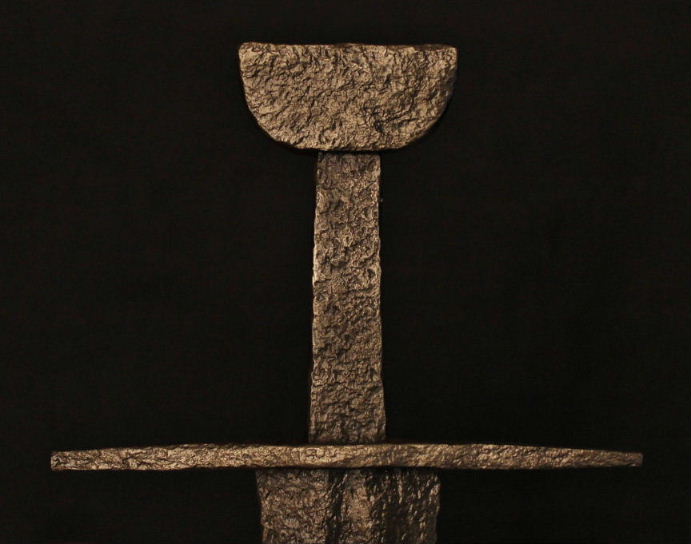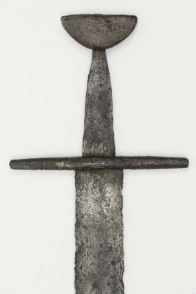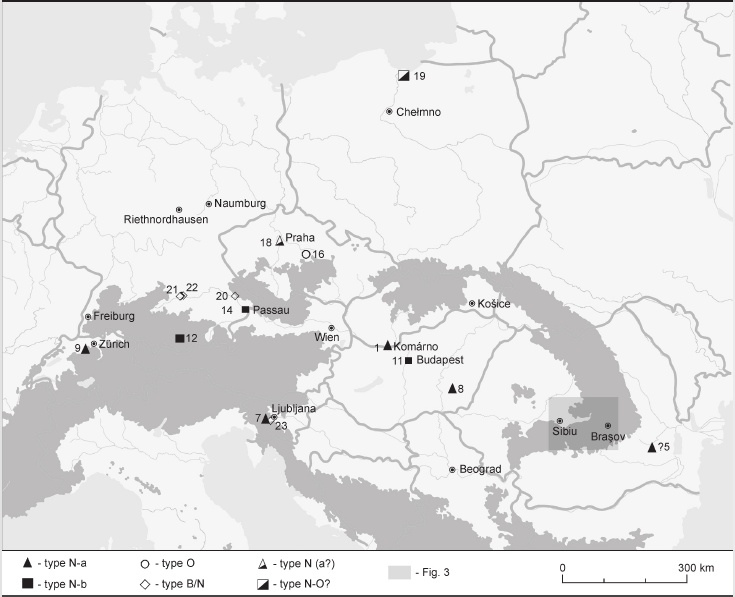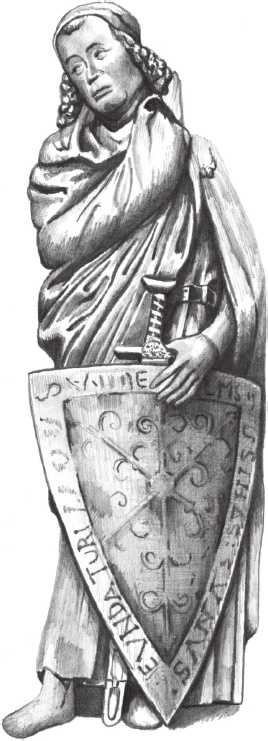Posts: 1,903 Location: Toronto
Tue 13 Jan, 2015 8:33 pm
What you need is a professional opinion, but here is another amateur opinion.
First, if this is an authentic sword it would be classified in
Oakeshott's scheme as an XIV dating to approximately 1300, give or take. The tip of the sword shows signs of a diamond-shaped cross section which is common to some of those (as well as many cheap modern replicas). On this, Oakeshott commented that this might make it technically an XVI, but he went with the overall shape in classifying such swords as XIV. The fuller looks reasonable to me for this type. The other swords you picture are earlier types: Xa, XI.
Regarding the pommel, in profile it looks like some of the N variants you picture, but I believe this type by definition has a roof-like top and I think that is true of the examples you show. Your sword has a flat top, even swelling in thickness. That puts it closer to an even rarer type 'P', similar to the Naumburg sculpture, which dates a bit earlier to the standard range for XIV but has similar dimensions. So this is either a fake by someone who only knew the profile of N, or a more rare type.
The cross is interesting because of the slight curve. One sees this sometimes in originals, but very rarely in modern replicas - they tend to be straight or clearly curved. I don't know why, but this adds a touch of authenticity.
The tang, again, is the troubling part. As noted above, it is unusually parallel in profile and its chunky thickness. Some XIVs have pretty parallel robust tangs, but then those ones (that I know of) also had the fuller extending well into the tang. This unusual tang, plus the unusual pommel, give the sword its suspicious look. But unusual does not mean wrong: lots of medieval swords have unusual features that don't fit with expected typologies.
I don't see anything obviously wrong with the state of corrosion, although apparently anything can be faked these days.
Overall, just based on those features and intuition, this looks like a real sword to me, but with some unusual features that require more scrutiny for confirmation by a professional.





